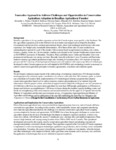Please use this identifier to cite or link to this item:
http://www.alice.cnptia.embrapa.br/alice/handle/doc/1039323Full metadata record
| DC Field | Value | Language |
|---|---|---|
| dc.contributor.author | FREITAS, A. A. | pt_BR |
| dc.contributor.author | BARBOSA, C. F. | pt_BR |
| dc.contributor.author | SANTOS, D. | pt_BR |
| dc.contributor.author | BORTOLON, E. S. O. | pt_BR |
| dc.contributor.author | BORGHI, E. | pt_BR |
| dc.contributor.author | AVANZI, J. C. | pt_BR |
| dc.contributor.author | BORTOLON, L. | pt_BR |
| dc.contributor.author | CAMPOS, L. J. M. | pt_BR |
| dc.contributor.author | ALCANTARA, P. H. R. | pt_BR |
| dc.contributor.author | GUARDA, V. D. A. | pt_BR |
| dc.date.accessioned | 2016-03-02T11:11:11Z | pt_BR |
| dc.date.available | 2016-03-02T11:11:11Z | pt_BR |
| dc.date.created | 2016-03-02 | pt_BR |
| dc.date.issued | 2014 | pt_BR |
| dc.identifier.citation | In: WORLD CONGRESS ON CONSERVATION AGRICULTURE, 6., 2014, Winnipeg, Manitoba. Proceedings. West Lafayette: Conservation Technology Information Center, 2014. | pt_BR |
| dc.identifier.uri | http://www.alice.cnptia.embrapa.br/alice/handle/doc/1039323 | pt_BR |
| dc.description | Brazilian agriculture is facing another expansion cycle to the Cerrado region, more specific in the Northeast. The first agriculture expansion cycle to the Midwest was in seventies encouraged and developed by Brazilian Government with farmers from southern and southeast Brazil, which were traditional small farmers with some experience, low budget and a remarkable determination. All of these efforts after 20 years resulted in an outstanding development of a part of the country with economy based on agribusiness (soybean, corn, cotton, livestock, poultry, swine, etc.). In late nineties, another cycle initiated in the Cerrado Northeastern region known as MATOPIBA (acronyms of Maranhão, Tocantins, Piauí, and Bahia states). Bahia and Maranhão were more pronounced and became very strong over time. Recently, basically in the last 5 years Tocantins and Piauí states started to increase agricultural production in high rates, reaching in Tocantins state a 30% increase of crop area per year and 34 % increase of total grain production per year and soybean is the major crop. Most of technologies developed in other Cerrado regions are not well adapted to MATOPIBA and a technology transfer is necessary to address conservation agriculture principles to farmers, agronomists, consultants and extension agents. | pt_BR |
| dc.language.iso | eng | eng |
| dc.rights | openAccess | eng |
| dc.subject | Matopiba | pt_BR |
| dc.subject | Transferência de tencologia | pt_BR |
| dc.title | Innovative approach to address challenges and opportunities to conservation agriculture adoption in Brazilian agricultural frontier. | pt_BR |
| dc.type | Artigo em anais e proceedings | pt_BR |
| dc.date.updated | 2016-03-15T11:11:11Z | pt_BR |
| dc.subject.thesagro | Adoção de inovações | pt_BR |
| dc.subject.thesagro | Cerrado | pt_BR |
| dc.subject.nalthesaurus | Innovation adoption | pt_BR |
| dc.format.extent2 | p. 9-10. | pt_BR |
| riaa.ainfo.id | 1039323 | pt_BR |
| riaa.ainfo.lastupdate | 2016-03-15 | pt_BR |
| dc.contributor.institution | ALEXANDRE AIRES DE FREITAS, CNPASA; CLAUDIO FRANCA BARBOSA, CNPASA; DEIVISON SANTOS, CNPASA; ELISANDRA SOLANGE OLIVEIRA BORTOLON, CNPASA; EMERSON BORGHI, CNPMS; JUNIOR CESAR AVANZI, CNPASA; LEANDRO BORTOLON, CNPASA; LEONARDO JOSE MOTTA CAMPOS, CNPSO; PEDRO HENRIQUE R DE ALCANTARA, CNPASA; VITOR DEL ALAMO GUARDA, CNPASA. | pt_BR |
| Appears in Collections: | Artigo em anais de congresso (CNPASA)  | |
Files in This Item:
| File | Description | Size | Format | |
|---|---|---|---|---|
| CNPASA2014aaf.pdf | 103,88 kB | Adobe PDF |  View/Open |









